#sunnyside family
Explore tagged Tumblr posts
Text
please come out and play with us more
SPOILERS (ish? not really?)



#fanart#undertale yellow#uty#starlo uty#starlo#north star#crestina#solomon#orion#clover#clover uty#chat it’s confirmed starlo is a mama’s boy!!#this was the first post of 2025 on twt i will share the angst here#sunnyside family#angst#spoilers#im trying out a new art style
237 notes
·
View notes
Text





twitter algorithm sucks booty balls so im posting my fanart here instead.
#undertale yellow#uty#undertale yellow fanart#solomon uty#crestina uty#orion uty#starlo uty#i BARELY see any art for the rest of the sunnyside family so im fixing that#prepare for my silly goofy hcs MUHAHAHAHAHA!
248 notes
·
View notes
Note
What do Stan's family look like
Solomon, Christina, Orion and Stanley Sterling!
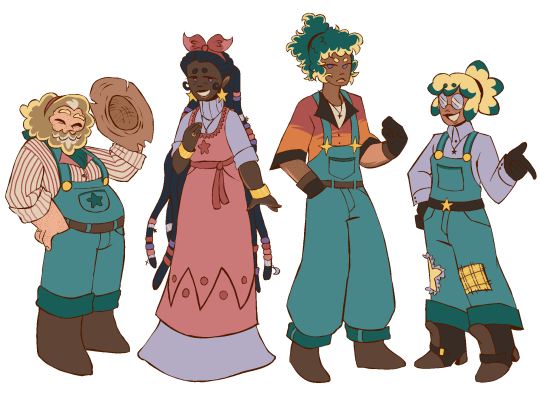
Been sitting on this for a while, might not've posted it if I didn't get an ask about it! thanks Anon :3
#undertale#undertale yellow#undertale au#c!overtale#solomon undertale yellow#crestina undertale yellow#orion undertale yellow#north star undertale yellow#solomon c!overtale#christina c!overtale#orion c!overtale#stan c!overtale#sunnyside family uty
100 notes
·
View notes
Text
Can we talk about Starlo's family cause like. How can everyone in that house be so damn pretty


#ut yellow#undertale yellow#uty#yomiel speaks#bad quality pics🔥🔥🔥#ft. Ceroba cameo in the 2nd pic (fox lady on the corner)#i like sunnyside farm :] it's such a pretty place... the music is beautiful too.... lil peace of heaven with all the green—uh. corn#then again im very biased when it comes to celestial themed stuff. this whole family just ticks all of my checkboxes 0(-(#this is also where you're informed that both brothers have pretty singing voices like his mom!#and that she used to sing before they were born :] then she stopped apparently :[#i like this family i like their farm. can i live with them /JJJ#i also like that the sons both have star heads in different forms. got dad's head shape (stars) but their mom's voice... how cute...#i cant recall if they ever state who's the older of the two so i like to think orion is the older brother ☝
59 notes
·
View notes
Text

Omg she slays the day🌙💅💅
2 notes
·
View notes
Text
Sometimes I forget how evident it is the types of characters I gravitate towards f/o wise like. Romantic, Platonic, Familial, no matter what their are certain characters I tend to feel that connection with that tend to have a visualization or connection to one of four things You've got The Sun/Day - Sun, Gojo, Jackie, Nemona, Astrid, Luffy, Shanks, Wukong, Mari The Moon/Night/Stars - Moondrop, Cassandra, Howl, Stardust Cookie, Moonlight Cookie, Stardust Cookie, Luna, Nebula, Carol, Jim, Arvin, Silver, Giovanni, Mihawk The Fire - Sanji, Red Son, Axel, Capsaicin Cookie, Ember, Mei, Ace, Toriel, Asgore The Neurodiverce - Axel, N, Metal Sonic, Thistle Whistle, Link, Robin, Hifumi, Penny, Tails, Sunny/Omori, Mihawk
Like. I can't complain but it's kind of funny how frequently these kinds of characters are ones I look at and have interest in sknglkndsk
#ollie musings#☀️sunnyside up.rom#🌥️a world of our creation.rom#🍫smile so much our cheeks hurt.rom#🌕moon and stars.rom#💎all i need is you.rom#🌟looking for you in every universe.rom#💫all that glitters.rom#🌙dream a little dream of me.rom#🌕i fell in love with the mare in the moon.rom#🚀the equation of love.rom#🎆you're something out of a dream.rom#🥘a dish made with love.rom#🔥spice of life.rom#❤️i've got you memorized.rom#❤️🔥eternal flame baby💀#🌺you set my heart ablaze.rom#🎡you’re as strange as me.rom#💙jumpstart my heart.rom#🪁you make me a little bit braver.qpp#platonic#🏆battle buddies#🎇unmapped stars#🥪come on now we found every herba mystica we can do anything!#🐉dragon horse bestie#💣besties through time#🌷 for the record i trust you#🖊️my go to muse#📱more in common than you'd think#familial
2 notes
·
View notes
Text
#Roncesvalles#Roncesvalles family photographer#High Park#Sorauren Park#Sunnyside Provisions#Kristyn Kowalewski RMT#The Commoner Roncesvalles#Andrew Black
0 notes
Text

@northstarscowboyhat @gaymeatcore I'm putting these tags on the fridge.
Yeah yeah yeah! All of this! If Orion is the older one, then why is he still living at home? He's proven himself to be more mature than Starlo, he's participating diligently in family business. So if he's the older one, why hasn't he moved out yet? Started his own business? Gotten a spouse and kid(s)? Surely Crestina and Solomon would be concerned about Orion the same way that they express concern about Starlo not achieving the expected milestones of having a wife and settling down. But they don't. Likely because they don't expect him to take those next steps in life/independence just yet.
Plus, the way that Orion talks to Clover strikes me as being more in the older teen/young adult demographic. Like, yeah, sure Orion is more mature than Starlo in the sense that he gets work done. But he's still complaining under his breath about Clover while they're in earshot and are being dismissive in a way that's pretty immature.



(*Clover Voice* I have ears Orion. And not just the corn ones that're all around us.)
I mean, that could just be his personality, there are plenty of older people out there with more immature personalities. But this doesn't strike me as just personality speaking here, if you catch my drift. (Also, Starlo doesn't speak under his breath during interactions with him, for comparison. Especially not to sass someone. Again, it could just be a difference in personality because Starlo isn't rude like that but I don't think that's the only reason.)




Yeah, this is just capital "J" jealousy directed at his "bro" because Starlo gets to have fun all the time, meanwhile Orion is stuck at home, feeling like a goldfish that's starting to outgrow its bowl. Calling what Starlo does just "shootouts" and "inconveniencing pedestrians" is a bit harsh (though, considering that Starlo kidnapped Clover and imprisoned Martlet when they were just trying to pass through and also had a shootout as a mission, he's not exactly wrong), but well. Orion wants the chance to grow out of the house, move on from the double-decker rocket ship bed and floor corn and glow in the dark stars on every surface of his childhood bedroom, get out into the world, figure out a life for himself outside of just work and the family business. But he can't. Someone has to help with the farm and Starlo has already proved that it's not gonna be him. Orion is envious of Starlo's freedom. And Starlo likely got his freedom because he's older so he was born into an advantage and could move out first.
Tl;dr: I feel like Starlo being the older sibling makes more sense than Orion being the older sibling. Age ≠ maturity/how responsible someone is.
I know that it's common fanon belief to see Starlo as the younger sibling between him and Orion, but I actually like the idea of Starlo being the older brother and what it means for his family dynamic. Generally, the older sibling is expected to be the more responsible and mature sibling in the family. There's this expectation that the older sibling sets an example for the younger sibling(s) and that they'll look after the family/business once the parents get too old to do so themselves. So, what does it mean when the older sibling sorta betrays those familial expectations by behaving immaturely and ditching the family to do their own thing?
I'm trying to figure out how to put this into words in a clear and concise way, but I feel like if it's a case of Starlo being the younger brother, then there's this sorta "Ah, that's just the younger brother acting like a kid, y'know how it is. He'll grow out of it" dynamic, whereas if Starlo is the older brother, then it's more of a "Okay, he should've grown out of this by now, why's he still acting like this? Even Orion is more mature than him; what is going on?" sorta deal. (This frustration would be especially felt by Orion, who has to pick up Starlo's slack in his stead because his older brother isn't mature enough to work like he's supposed to!!!)
These are just personal musings, don't take my word as gospel! You can still do tons of interesting things with the Sunnyside family while having Starlo be the younger brother and Orion the older one. I just find myself gravitating more towards seeing Starlo as the older sibling.
#i meant to rb this earlier with the tags but then things happened and i forgor. oops#better late than never i suppose.#again who's younger and who's older in the Sunnyside family isn't confirmed in canon. this is just the interpretation I've picked up
61 notes
·
View notes
Text

Available to download on Patreon
Release Dates:
Choco Puds - 08.11 Mini Puds - 15.11 Bow Puds - 22.11 Public - 29.11
Toastie Recipes ~ warning lots of cheese:
Cheese
Ham & Cheese
Cheese & Tomato
Cheese & Onion
Bean Filled
Tuna Melt
Chocolate
Poptart
Fluffernutter
Buttered Toast
Apple & Camembert - requested by Boum 😊
Sunnyside Egg Toastie
'Adventurous Occult' Toasties:
Cowberry Toastie - 'waters' and 'feeds' plant sim
Plasma Toastie - replenishes vampire thirst
Seafoam Toastie - replenishes mermaid hydration and hunger
----------------------------------
All level 1 cooking skill Ingredients optional Available in restaurants Single, Family & Party Servings available
----------------------------------
Requirements:
Standalone mod.
Home Chef Hustle Stuff Pack Required for the Toastie Maker.
If you don't have the home chef hustle stuff pack but do have the dine out game pack, you can download the toasties to eat in restaurants! You just wont be able to make them at home.
----------------------------------
2K notes
·
View notes
Note
If Starlo and Ceroba become grandparents when Clover adopts Frisk, how excited are the Sunnysides to be great grandparents?
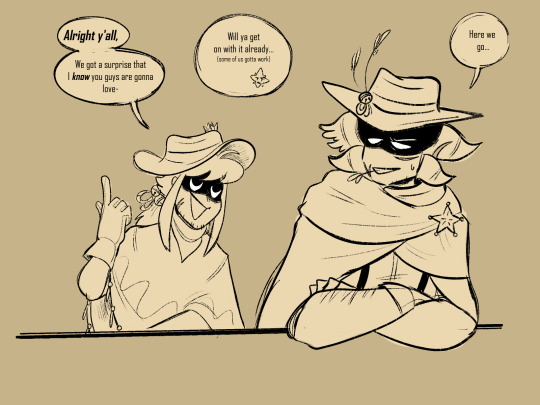
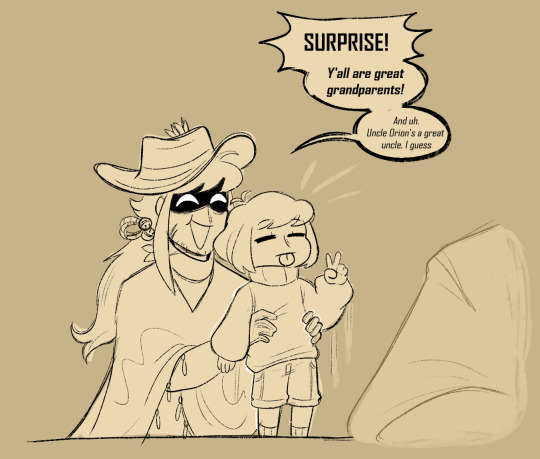
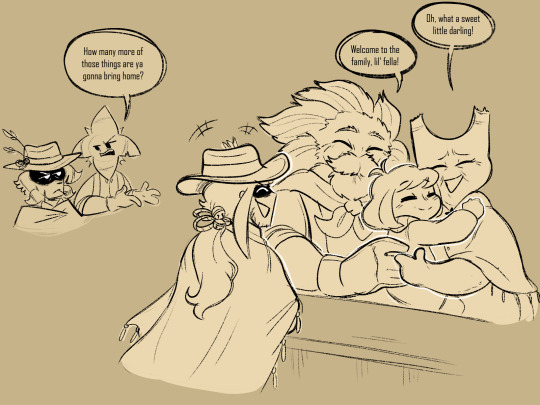
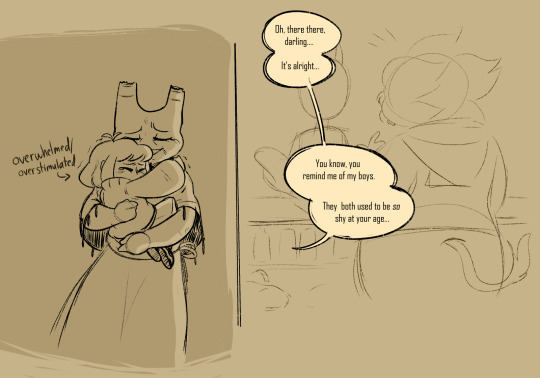
They were beyond excited and extremely accepting and eager (to an almost comical degree) to have another kid in the family to spoil and love! It probably was Orion who was like "Wait. Great grandkid? What're you talkin' about-" for them to actually question why and how Frisk appeared, LOL. They love Clover but they've missed having younger kids around, so of course they latch onto Frisk and give them lots of grandparent love in the time Frisk spends with Clover's family!
#undertale yellow#uty#uty au#lucky clover au#undertale#frisk#frisk ut#north star#starlo uty#clover#clover uty#crestina uty#solomon uty#orion uty#the cowboy hat draws#Honored to be the only UTY fanartist who draws Starlo's family in AU shenanigans /j
558 notes
·
View notes
Text
Also preserved on our archive (Daily updates!)
An older (published in January 2024) but interesting and comprehensive look at long Covid's effect on Latino families and communities in the US.
By Lygia Navarro and Johanna Bejarano
Editor’s note: This story first appeared on palabra, the digital news site by the National Association of Hispanic Journalists. It is part of a series produced in partnership between palabra and Northwest Public Broadcasting (NWPB) with the collaboration of reporters Lygia Navarro and Johanna Bejarano. *Some people interviewed for this article requested anonymity to discuss private health issues.
Victoria* is already exhausted, and her story hasn’t even begun. It’s late January 2021 in rural Sunnyside, Washington. The town of 16,000 people is a sleepy handful of blocks flecked with pickup trocas, churches on nearly every corner, and the twangs of Clint Black and Vicente Fernández. Geometric emerald chunks of farmland encircle the town.
Thirty-nine-year-old Victoria drags herself back and forth to her parents’ bedroom in a uniform of baggy burgundy sweatpants, scarf, knit hat and mask. Always a mask. As the eldest sibling, her unspoken job is to protect the family. But COVID-19 hits before they can get vaccinated.
When Victoria’s mamá got sick and quickly infected her papá, Victoria quarantined them. She shut them in their room, only cracking the door briefly to slide food in before retreating in a fog of Lysol.
Working in the health field, Victoria knows if they make it through the first 14 days without hospitalization, they will likely survive. Yet, caregiving drains her: Keeping track of fevers. Checking oxygen saturation. Making sure they’re drinking Pedialyte to stay hydrated. Worrying whether they will live or die.
Five days in, COVID comes for Victoria. Hard. Later, when she repeatedly scrutinizes these events, Victoria will wonder if it was the stress that caused it all — and changed her life forever.
At the pandemic’s onset, Victoria’s family’s work dynamics fit the standard in Sunnyside, where 86% of residents are Latino. “Keeping the members of your household safe — it was hard for a lot of families,” Victoria says. Living in multigenerational homes, many adult children, who’d grown up in the United States with access to education, had professional jobs, and switched to working from home. Their immigrant elders, who’d often only been able to finish fourth grade, braved the world to toil in fields, produce packing plants, supermarkets, or delivery trucks. As Leydy Rangel of the UFW Foundation puts it: “You can’t harvest food through Zoom.”
More than three decades ago, when 6-year-old Victoria’s family migrated from rural northern Mexico to this fertile slip of land cradling the zigzagging Yakima River, their futures promised only prosperity and opportunity.
According to oral histories of the Confederated Tribes and Bands of the Yakama Nation — who white colonizers forced out of the Yakima Valley in 1855 — the valley’s fecund lands have fed humans since time immemorial. Soon after the Yakamas’ removal to a nearby reservation, settler agriculture exploded.
By World War II, employers were frantic to hire contracted bracero laborers from Mexico — themselves descendants of Indigenous ancestors — to harvest the valley’s bounty of asparagus, pears, cherries and other cornucopia. This was how Victoria’s family arrived here: her abuelo and his brother had traveled back and forth to Washington as braceros decades before.
Victoria’s path took similar twists, in a 21st century, first-gen way. She moved all over the country for her education and jobs, then returned before the pandemic, bringing a newfound appreciation for the taste of apples freshly plucked from a tree that morning, and for the ambrosial scent of mint and grapes permeating the valley before harvest.
Today, agriculture is the largest industry fueling the Yakima Valley, the country’s twelfth-largest agriculture production area. Here, 77% of the nation’s hops (an essential ingredient in beer) and 70% of the nation’s apples are grown. Latinos, who constitute more than half of Yakima County’s population, power the agricultural industry.
While the area’s agricultural enterprises paid out $1.1 billion in wages in 2020, 59% of the low-wage agriculture jobs are held by undocumented folks and contracted foreign seasonal laborers doing work many Americans spurn. Latinos here live on median incomes that are less than half of white residents’, with 16% of Latinos living in poverty. Also in 2020: as they watched co-workers fall ill and die, Latino farmworkers repeatedly went on strike protesting employers’ refusals to provide paid sick leave, hazard pay and basic COVID protections like social distancing, gloves and masks.
“Every aspect of health care is lacking in the valley,” Yakima Herald-Republic health reporter Santiago Ochoa tells me.
In interview after interview, Yakima Valley residents and health care workers sketch in the details of a dire landscape:
The state’s busiest emergency room. Abrupt shutdowns of hospital facilities. Impoverished people without transportation or internet access for telehealth. Eight-month waits for primary care appointments. Nearly one in five Latinos uninsured. More than half of residents receive Medicaid. Resident physicians cycling in and out, never getting to know their patients. Not enough specialists, resulting in day-long trips for specialized care in bigger cities. With its Latino essential workforce risking their lives to feed their families — and the country — by summer 2020, COVID blazed through Yakima County, which quickly became Washington’s most scorching of hot spots. Not only did Yakima County tally the highest per-capita case rate of all West Coast counties (with Latinos making up 67% versus, 26% for white people), it also saw more cases than the entire state of Oregon. Ask Latinos here about 2020, and they shiver and avert their gazes, the trauma and death still too near.
Their positive tests marked just the beginning of terrifying new journeys as COVID slammed Victoria and many other Yakima Valley Latinos. Mix in scanty rural health care, systemic racism and a complicated emerging illness, and what do you get? Chaos: a population hardest hit by long COVID, but massively untreated, underdiagnosed, and undercounted by the government and medicine itself.
It won’t go away The cough was the first clue something wasn’t right. When Victoria had COVID, she’d coughed a bit. But then, three months later, she started and couldn’t stop.
The Yakima Valley is so starved for physicians that it took five months to see a primary care doctor, who attributed Victoria’s incessant cough to allergies. Victoria tried every antihistamine and decongestant available; some brought relief for three, maybe four weeks, and then returned spasms of the dry, gasping bark. A few minutes apart, all day long. The worst was waking up coughing, at least hourly.
Victoria had chest x-rays. An ear, nose and throat specialist offered surgery on her nose’s deviated septum. As months passed, the black hair framing Victoria’s heart-shaped face started aging rapidly, until it was grayer than her mother’s.
Over a year after the cough began, an allergist prescribed allergy drops, and Victoria made a chilling discovery. Once the drops stopped the cough for a month, then two, Victoria realized that the extreme fatigue she’d thought was sleep deprivation from coughing all night persisted.
“The exhaustion comes from within your soul, it overpowers you,” she says. “It’s intolerable.”
And her mind was foggy. When interrupted at work every 10 minutes by a coughing jag, Victoria hadn’t realized COVID had substantially altered her brain. “There are things in my brain that I should have access to, like words, definitions, memories,” she says. “I know that they’re there but I can’t access them. It’s like a filing cabinet, but I can’t open it.”
Before long, the cough resurfaced. Sometime in 2021, reading COVID news for work, Victoria learned of long COVID: new or lingering health issues persisting at least three months after COVID infection.
How to get help if you think you might have long COVID Talk to your doctor, and if your doctor doesn’t listen to your concerns, bring a loved one to advocate for you at your next appointment. Bring this article (or other materials on long COVID) to show your doctor. Ask your doctor about seeing specialists for long COVID symptoms, such as a cardiologist (for dysautonomia symptoms like dizziness, heart palpitations and shortness of breath), a gastroenterologist (for digestive problems), or a neurologist (for chronic nerve pain). Ask to be referred to a long COVID clinic (if there is one in your area). Now four years into the pandemic, there is still no treatment or cure for long COVID. COVID long-haulers (as they call themselves) have reported over 200 varied symptoms, with fatigue, dizziness, heart palpitations, post-exertion exhaustion, gastrointestinal issues, and brain dysfunction among the most common.
Long COVID is far from a mysterious illness, as it’s often called by the medical establishment and some media. There are precedents: for at least a century, historical documentation has shown that, while most recover, some people remain sick after viral or other illnesses. Yet funds for research have been severely limited, and sufferers ignored. Myalgic Encephalomyelitis – sometimes called Chronic Fatigue Syndrome, or ME/CFS — is a prime example. Like ME/CFS, long COVID afflicts many more women (and people assigned female at birth) than men, with women comprising as many as 80% of COVID long-haulers. Most long-haulers are in their 30s, 40s and 50s — the busiest years for women with children, who often put their own needs last.
What should have been instantly clear, given how disproportionately Black and Brown communities were hit by COVID, was that long COVID would wallop Americans of color. Yet, the U.S. government waited until June 2022 to begin tracking long COVID. Even now, with 18 months of data showing Latinos are the population most impacted by long COVID, palabra is among the very few media outlets to report this fact. Are the nation and the medical community willfully ignoring Latino long-haulers — after sending them into clouds of coronavirus to keep society’s privileged safe?
Fighting for a diagnosis When Victoria mentioned long COVID, her doctor didn’t exactly ignore her: she listened, said “OK,” but never engaged on the topic. Same with Victoria’s allergist and the ear, nose and throat specialist. All they could do, the doctors said, was treat her symptoms.
“I’m highly educated and I know that you have to be your own advocate. But I kept asking, kept going on that line of thought, and they had nothing to say to me. Absolutely nothing,” she laments.
Victoria understood science on long COVID was limited, but still expected more. “All of the treatments we tried, it was as if COVID hadn’t existed. They should at least say that we need to investigate more, not continue acting like it wasn’t a factor. That was what was most frustrating.”
Just as Victoria fought to have her illness validated by doctors, 30 miles away in the northern Yakima Valley town of Moxee, 52-year-old María* waged a parallel battle. Both felt utterly alone.
When the pandemic began, María became the protector of her husband and children, all asthmatics. When she fell ill New Year’s Day 2021, she locked herself in her room, emerging weeks later to find her life unrecognizable.
Recounting her struggles, María reads deliberately from notes, holding back tears, then pushes her reading glasses atop her head. (María moved here from northern Mexico as an adult, and feels most comfortable in Spanish.) Her dyed brown hair, gold necklace and lightly made-up face project convivial warmth, but something intangible behind her expression belies a depth of grief María refuses to let escape. When I tell her I also have long COVID, and fell ill the exact same month, she breathes out some of her anxiety.
María’s long COVID includes chronic, full-body pain; memory lapses so severe she sometimes can’t remember if she’s eaten breakfast; such low energy that she’s constantly like a battery out of juice; unending shortness of breath; joint inflammation; and blood flow issues that leave her hands a deep purple. (The only time María ventured to the hospital, for her purple hands, she says staff attempted to clean them, thinking it was paint.) Like Victoria, María used to enjoy exercise and hiking in the valley’s foothills, but can do neither anymore.
María has no insurance, and receives care at the Yakima Valley Farm Workers Clinic, created in 1978 out of the farmworkers’ movement. The clinic’s multiple locations are the valley’s main providers of care irrespective of patients’ ability to pay.
Whereas Victoria’s doctors expressed indifference to the idea of COVID causing her health complaints, María’s doctors not only discounted this connection, but made serious errors of misdiagnosis.
“Every week I went to see my doctor. She got so stressed out (at not knowing what was wrong with me) that she stressed me out,” María says. “My doctor told me, ‘You know what? I think you have multiple sclerosis.’” María saw specialists, and afterwards, even without confirmation, María says her doctor still insisted she had MS. “I told her, ‘No. No, I don’t have multiple sclerosis. It’s COVID. This happened after COVID.’ I was really, really, really, really, really, really insistent on telling them that all of this was after COVID.”
Latinos uncovering the connections between their ill health and COVID is rare, partially due to the plummet in COVID coverage on Spanish-language news, says Monica Verduzco-Gutierrez, a long-hauler and head of the University of Texas Health Science Center San Antonio long COVID clinic. There has been no national public education on long COVID, in any language.
“It’s hard for people to understand what the real impact of long COVID is now and in the future,” says Lilián Bravo, Yakima Health District director of public health partnerships and the face of COVID updates on Yakima Valley television early in the pandemic. “We’re looking at a huge deficit in terms of people’s quality of life and ‘productivity.’”
Eventually, María’s doctor sent her to another specialist, who said that if she didn’t improve within a month, he’d operate on her hip. María’s never had hip problems. “He said, ‘Well, I don’t know what you’re going to do,’” and then put her on a strong steroid medication that made her vomit horribly, María says. She hasn’t tallied what she’s spent on medical bills, but after paying $1,548 for a single test, it must be many thousands of dollars.
Meanwhile, María’s family and friends kept insisting her maladies were psychological. “I never accepted that. I told them: ‘It’s not in my head. It’s in my body.’” It wasn’t until more than a year after becoming ill that María finally saw a rheumatologist who diagnosed her with long COVID and other immune dysfunctions. “I told her, ‘Yes, I knew that my body wasn’t working. I knew that something was wrong.’ I felt like I could relax. Finally someone is telling me that it’s not all in my head.” Once María was diagnosed, her extended family switched to asking how she was feeling and sympathizing with her.
Victoria, on the other hand, has never received a long COVID diagnosis. At Victoria’s request, her doctor referred her to the state’s only long COVID clinic, at the University of Washington in Seattle, but Victoria’s insurance, Kaiser Permanente, refused to pre-approve the visit — and the clinic wouldn’t accept cash from her. At present, the clinic isn’t even accepting patients from the Yakima Valley or any other part of Washington — they are only accepting patients in King County, which includes Seattle.
Victoria’s family hasn’t accepted her health struggles either. “I’d say, ‘I know that you think I’m crazy,’” Victoria says, chuckling, as she often does to lighten her discomfort. “My mom would fight with me: ‘You forgot to do this! Why are you so spacey?’ ‘Mami, it’s not that I forgot. In reality, I completely lost track of it.’” If Victoria is fatigued, her family asks how that’s possible after a full night’s sleep. “I’ve found that I have to defend myself. When I try to explain to people, they hear it as excuses from a lazy person — especially being Latinos.”
Karla Monterroso, a 42-year-old California Latina long-hauler since March 2020 who spent her first year bedbound, says, “(With long COVID), we have to rest in a way that, in our culture, is very difficult to achieve. We really judge exhaustion.” In fact, pushing physically or mentally for work can make long-haulers much sicker. Karla says Latino ethics of hard work like those of Victoria’s parents “aren’t the principles that are going to serve us with this illness.”
Long COVID diagnoses in Latinos are still too rare, due to untrained family medicine physicians and medical stereotypes, says Verduzco-Gutierrez. (Doctors might see blood sugar changes, for example, and assume that’s just because of Latinos’ high rates of diabetes, rather than long COVID.) She says “misinformation on long COVID” is rampant, with physicians claiming long COVID is a fad, or misdiagnosing the bone-deep exhaustion as depression. When Verduzco-Gutierrez’s own doctor invited her to speak to their practice, the assembled physicians weren’t aware of basic research, including that the drugs Paxlovid and Metformin can help prevent long COVID if taken at infection. In Washington, physicians must complete training on suicide, which takes 1,200 to 1,300 lives in the state yearly, but there’s no state-wide training on long COVID, which currently affects at least 498,290 Washingtonians.
Cultural skepticism about medicine — and entrenched stigmas about illness and disability — mean Sunnyside conversations about aftereffects don’t mention COVID itself. Victoria’s relatives push traditional herbal remedios, assuming that anyone still sick isn’t doing enough to recover. “(People suffering) feel like they’re complaining too much if they try to talk about it,” Victoria says. Meanwhile, her parents and others in her community avoid doctors out of stubbornness and mistrust, she says, “until they’re bleeding, when they’re super in pain…, when it’s gotten to the worst that they can handle.”
“People in this community use their bodies for work,” Victoria says. “If you’re Latino, you’re a hard worker. Period,” says Bravo. “What’s the opposite of that, if you’re not a hard worker? What are you? People don’t want to say, ‘I came to this country to work and all of a sudden I can’t anymore.’”
Victoria sees this with her parents, who’ve worked since the age of 10. Both have health issues inhibiting their lives since having COVID — her dad can’t take his daily hour-long walks anymore because of heart palpitations and shortness of breath, and her mom began getting headaches and saw her arthritis worsen dramatically — yet neither will admit they have long COVID. Nor will their friends and family. “If they noticed the patterns of what they themselves are saying and what their friends of the same age are suffering after COVID,” Victoria says of her community, “they’d hear that almost everyone is suffering some type of long COVID.”
Long COVID’s deep impact on Latinos The “back to normal” ethos is most obvious in the absence of long COVID messaging while as many as 41 million adults now have — or have recovered from — long COVID nationwide. “The way that we’re talking about the pandemic is delegitimizing some of (long COVID’s) real impacts,” says Bravo of the Yakima Health District.
Even with limited demographic data, statistics show a nationwide reality similar to Victoria’s Sunnyside. Through a recurring survey, the Census Bureau estimates that 36% of Latinos nationally have had long COVID — likely a vast underestimate, given that the survey takes 20 minutes to complete online (Latinos have lower rates of broadband internet), and reaches only a sliver of the U.S. population. Experts like Verduzo-Gutierrez believe that true rates of long COVID in Latinos are higher than any reported statistic. California long-hauler Karla Monterroso agrees: “We are underdiagnosed by a severe amount. I do not believe the numbers.”
This fall, a UC Berkeley study reported that 62% of a group of infected California farmworkers developed long COVID. Weeks later, a survey from the University of Washington’s Latino Center for Health found that, of a sample group of 1,546 Washington Latinos, 41% of those infected became long-haulers. The Washington results may also be an undercount: many long-haulers wouldn’t have the energy or brain clarity to complete the 12-page survey, which was mailed to patients who’d seen their doctor within the prior six months. Meanwhile, many long-haulers stop seeing doctors after tiring of the effort and cost with no answers.
“Our community has not bounced back,” says Angie Hinojos, executive director of Centro Cultural Mexicano, which has distributed $29 million in rent assistance in Washington and hasn’t seen need wane. “That is going to affect our earning potential for generations.” The United Farm Workers’ philanthropic sister organization, the UFW Foundation, says union organizers hear about long COVID, and how it’s keeping people out of work, frequently.
Cultural and linguistic disconnects abound between doctors and Latinos on long COVID symptoms, some of which, like brain fog and fatigue, are nebulous. If doctors lack patient rapport — or don’t speak their language — they’ll miss what patients aren’t sharing about how long COVID changed their lives, work and relationships. That’s if Latinos actually go to the doctor.
“If you’re working in the orchards and your muscles are always sore, it’s just part of the day-to-day reality,” says Jesús Hernández, chief executive officer of Family Health Centers in north-central Washington. “If you’re constantly being exposed to dust and even chemicals in the work environment, it’s easy to just say, ‘Well, that’s just because of this or that,’ and not necessarily be readily willing to consider that this is something as unique as long COVID.”
Even Victoria says if not for the cough, she wouldn’t have sought medical advice for her fatigue. “There are a lot of people out there that are really tired, in a lot of pain and have no idea why. None,” says Karla, who was a nonprofit CEO when she became sick. “I have heard in the last three-and-a-half years the most racist and fatphobic things I have ever heard in my life. Like, ‘Oh, sometimes you got to lay off the beans and rice.’ I have a college education. I’m an executive. I am in the top 10% of wage earners in my community. If this is my experience, what is happening to the rest of my people?”
Conspiracy theories and misinformation As Yakima Valley’s Latino vaccination rates continue dropping, I hear all the COVID conspiracy theories: the vaccine has a chip that’ll track you; the vaccine makes you and your children infertile; COVID tests are rigged to all be positive; that hospitals get paid more for COVID patients. Victoria laughs at the most absurd one she’s heard. Her mom’s explanation for her health problems nearly three years after COVID: the vaccine.
Across the Latino United States, social media algorithms and WhatsApp threads promoting COVID disinformation proliferate. Last summer, Latino Center for Health co-director Dr. Leo Morales did a long COVID community presentation just south of Yakima Valley. The audience’s first question: Are vaccines safe? “This is where we’re still at,” Morales says. “That’ll be a big stumbling block for people…in terms of getting to talking about long COVID.”
One morning in early November, Morales and his team gather in Toppenish at Heritage University, where 69% of students are Latino, to present their survey data. Neither presenters nor attendees wear masks, an essential tool for preventing COVID transmission and long COVID. “The only conversation that I’m having about COVID is in this room,” says María Sigüenza, executive director of the Washington State Commission on Hispanic Affairs.
Yakima Valley health institutions are also ignoring long COVID. Of the two main hospital systems, Astria Health declines interview requests and MultiCare reports that of 325,491 patients seen between January and November 2023, 112 — or 0.03% — were diagnosed with long COVID. The Yakima Valley Farmworkers Clinic, where María’s doctor works, refuses to let me speak to anyone about long COVID, despite providing patient information for the Latino Center for Health’s survey. Their doctors simply aren’t seeing long COVID, the clinic claims. Same with the other main community provider, Yakima Neighborhood Health Services, whose media officer responds to my interview requests with: “It’s not going to happen.”
“I think they’re not asking, they’re not looking,” Verduzco-Gutierrez says. “Do the doctors just…look at your diabetes or your blood pressure, but not ask you, ‘Did your diabetes get worse when you had COVID? Did your blood pressure get worse? Did you not have blood pressure problems before? And now do you get dizzy? Do you get headaches? Do you have pains?’” She believes that many, if not most, Latinos with long COVID aren’t getting care, whom she calls “the ones that we’re missing.”
An uncertain future The outlook for Latinos with long COVID is grim. Cultural stigma and ableism cause now-disabled long-haulers to feel shame. (Ableism is societal prejudice and discrimination against disabled people.) Disability benefits are nearly impossible to get. Long-haulers are losing their homes, jobs and insurance. Latinos’ overrepresentation in sectors that don’t offer sick pay and are heavily physical — cleaning, service, agriculture, construction, manufacturing, homecare and healthcare among them — may automatically put them at higher long COVID risk, given ample anecdotal evidence that pushing through a COVID infection instead of resting can lead to long COVID. Latino care providers will become ill in greater numbers, imperiling the healthcare industry.
But Latinos may not be clear on these factors, says long-hauler Karla Monterroso. “My tío had said…'We must be defective because we get sick more than the white people.’ And I’m like ‘No, tío. We are exposed to the illness more. There’s nothing defective about our bodies.’ I’m afraid for us. It’s just going to be disability after disability after disability. We have to start in our small communities building caring infrastructure so that we can help each other. I am clear: No one is coming to save us. We’ve got to save us.”
Disability justice advocates worry about systems unable to cope with inevitable disabling waves of COVID in the future. “(Latinos) aren’t taking it as serious as they should,” says Mayra Colazo, executive director of Central Washington Disability Resources. “They’re not protecting each other. They’re not protecting themselves.” Karla sees the psychology behind this denial: “I have thought a lot about how much it takes to put yourself in danger every single day. (You have) to say ‘Oh, it’s fine. People are exaggerating,’ or you get that you’re in existential hell all of the time.”
Reinfection brings additional risk of long COVID, research shows, and Verduzco-Gutierrez says, “We still don’t know the impact of what is going to happen with all these reinfections. Is it going to cause more autoimmune disease? Is it going to be causing more dementia? Is it going to be causing more cancer?” She believes that every medical chart should include a COVID history, to guide doctors to look for the right clues.
“If we were to be lucky enough to capture everybody who has long COVID, we would overwhelm our (health) system and not be able to do anything for them,” Victoria says. “What’s the motivation for the medical field, for practitioners to find all those people?” For now, Victoria sees none. “And until that changes, I don’t think we will (properly count Latino long-haulers),” she adds.
Flashes of hope do exist. In September 2023, the federal government granted $5 million each to multiple long COVID clinics, including three with Latino-specific projects. In New York City, Mt. Sinai Hospital will soon open a new long COVID clinic near largely-Latino East Harlem, embedded in a primary care clinic with staff from the community to reach Latino long-haulers. Verduzco-Gutierrez’s San Antonio clinic will teach primary care providers across largely rural, Latino South Texas to conduct 15-minute low-tech long COVID examinations (the protocol for which is still being devised), and will deploy community tools to educate Latinos on long COVID.
Meanwhile, at the University of Washington long COVID clinic, staff are preparing a patient handbook, which will be adapted for Latinos and then translated into Spanish. They will also train primary care physicians to be local long COVID experts, and will return to treating patients from the whole state rather than just the county containing Seattle. After palabra’s inquiry, the UFW Foundation now has plans to survey United Farm Workers members to gauge long COVID pervasiveness, so the Foundation can lobby legislators and other decision makers to improve Latino long-hauler care.
Back at the Yakima Valley survey presentation, attendees brainstorm new care models: Adding long COVID screening to pediatric checkups, given that long COVID most impacts child-bearing-age women, so moms can bring information to their families and community. Using accessible language for long COVID messaging, or, as Heritage University nursing faculty member Genevieve Aguilar puts it: “How would I talk to my tía, how would I talk to my abuelita? If they can understand me, we’re good to go. If they can’t, olvídate. We have to reframe.”
More than anything, personal narratives will be the key to open people’s minds about long COVID — although that path may be challenging. In Los Angeles, Karla has dealt with a lack of full family and community support, in part, she believes, because her body represents COVID. “I am living, breathing proof of a pandemic no one wants to admit is still happening, and that there is no cure for what I have. That is a really scary possibility.”
While Karla does identify as disabled, Victoria and María don’t. Victoria has learned to live and move within her physical limits. At work, she sometimes feels inhibited by her cognitive issues. “I tell my boss all the time, ‘Oh man, you guys hired such a smart person. But what you got was after COVID, so it’s not the same.’” At times, she worries about the trajectory of her career, about how her work’s intense problem-solving wears out her brain. Will she be able to pursue larger challenges in work in the future? Or will long COVID ultimately make her fail?
Victoria tells me she “remains hopeful that there is a solution.” In a surprising twist, her cough completely disappeared eight months ago — when she became pregnant. (Other long-haulers have seen their symptoms improve with pregnancy, as well, likely due to immune system changes allowing a pregnant person’s body to not reject their baby’s growing cells). Victoria is optimistic that her other symptoms might disappear after she gives birth. And that, maybe someday, her parents will admit they have long COVID, too.
#long covid#covid 19#mask up#covid#pandemic#public health#wear a mask#still coviding#wear a respirator#coronavirus#sars cov 2#covid conscious#covid is airborne#covidー19#covid isn't over#covid pandemic#covid19
120 notes
·
View notes
Text
sunnyside family art dump
au by @s0ckh3adstudios

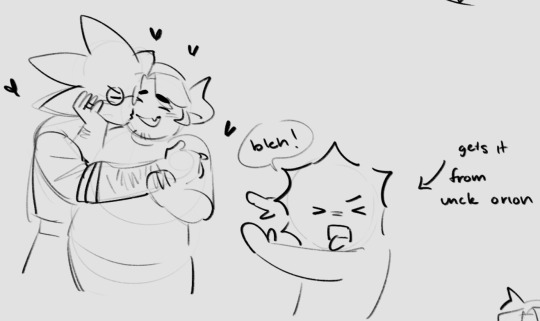



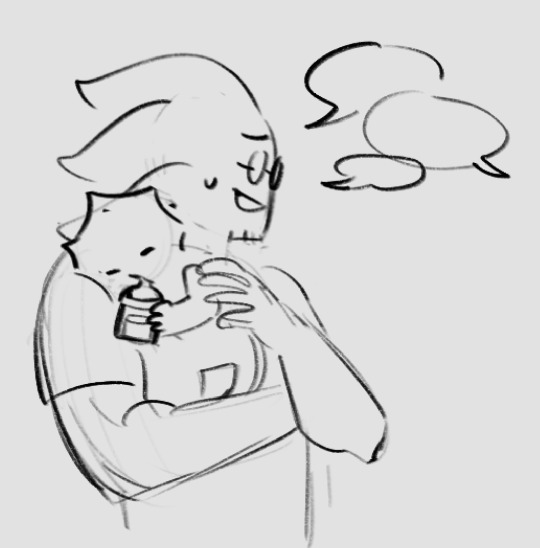
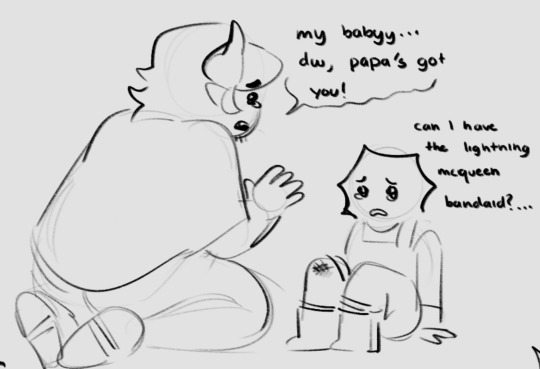



#fanart#undertale yellow#dalv#starlo#corn yaoi#dalv uty#starlo uty#dalv x starlo#utg#utg starlo#utg dalv#art dump#undertale gold au#uty au#au
464 notes
·
View notes
Text

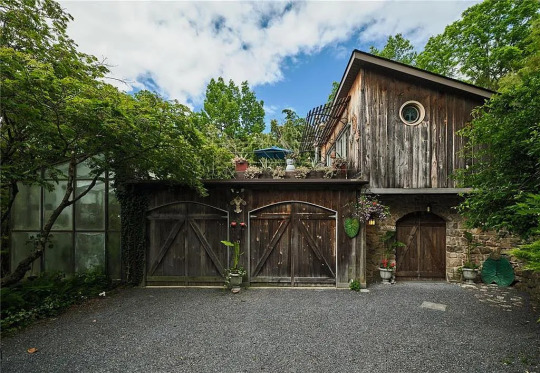
I don't usually like barn conversions, but I love this 1803 barn in Easton, PA. 3bds, 3ba, $849K. (Is it just me who gets a pang of jealousy when I see that a listing I like is pending?)

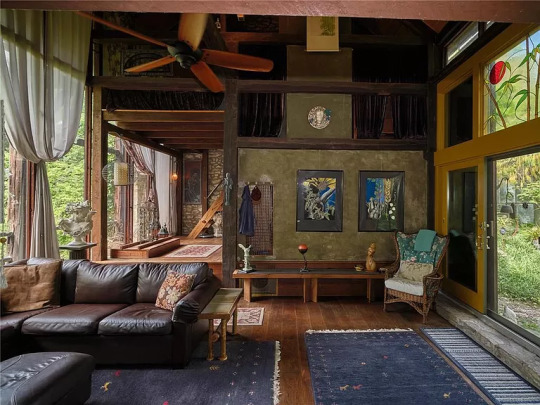
This is nice, it doesn't have that modern farmhouse look.
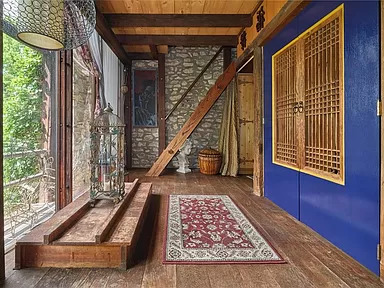
I think that it looks more Zen & Bohemian.
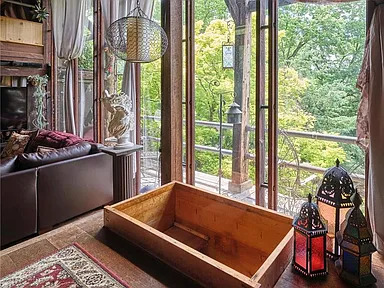
This is a little awkward, though. Is that a ladder in there?
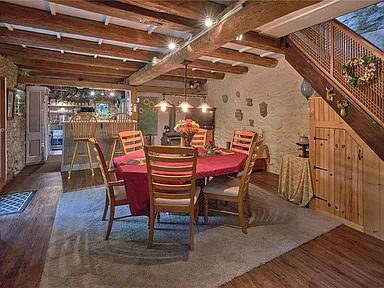
The kitchen and dining areas are a little barn-ish.
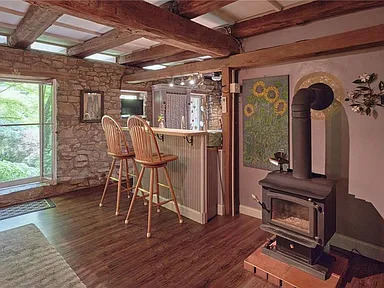
Little heat stove next to the kitchen counter.
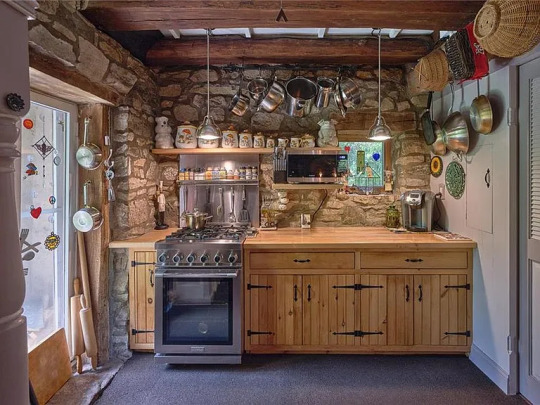
They show the kitchen on the floor plan, but this is all that they show of it in the listing.
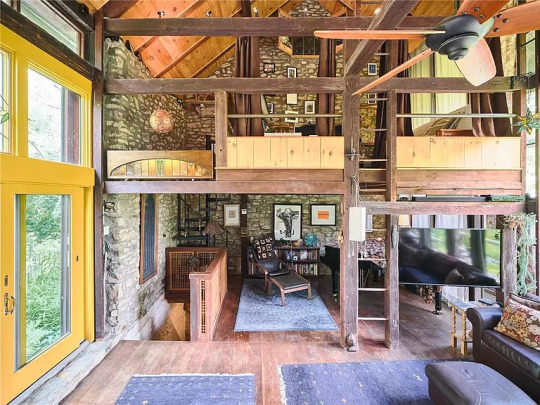
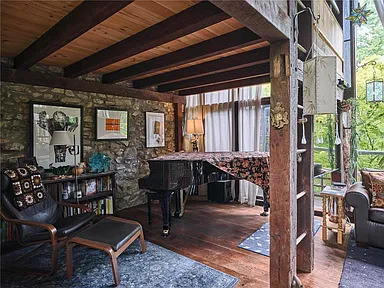
Cozy family room under the loft.
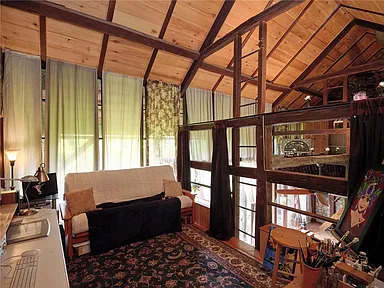
There's a den up here, and it looks like some art supplies, also.
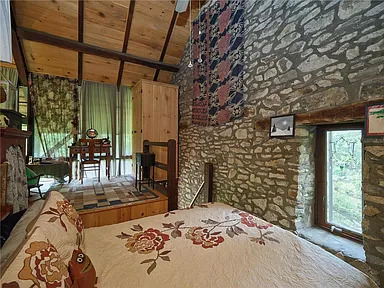
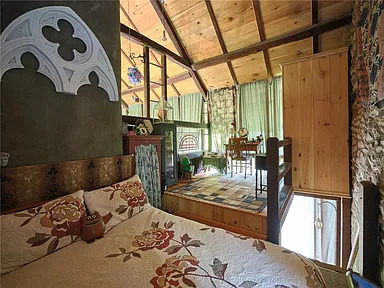
Unusual bedroom. It looks like it has a sitting room one level up.
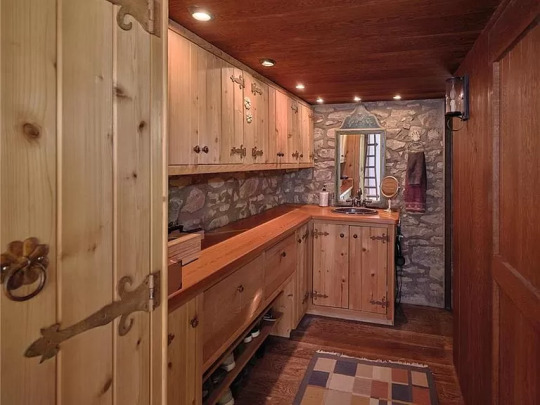
Here's a large bath.
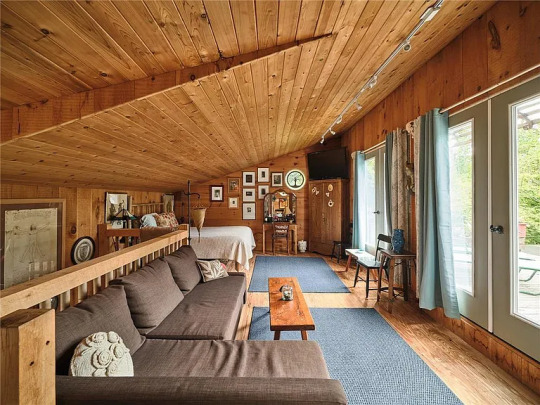
And a large bedroom, with a sitting area, facing a patio.
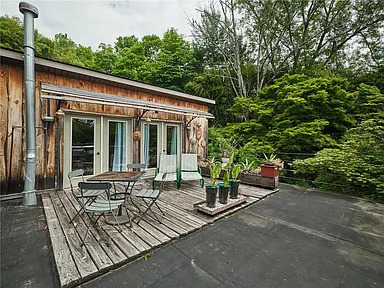
It's on the roof over the garage, so it must be the primary bedroom, b/c it's very private.
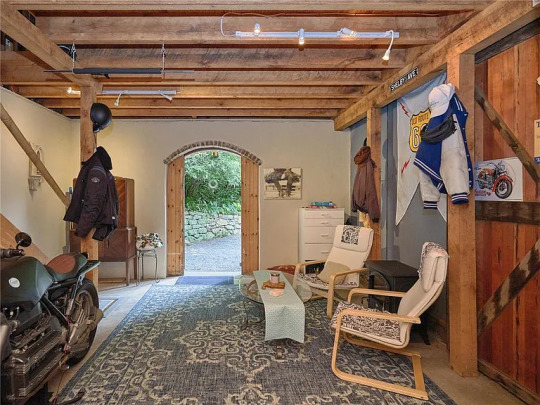
Down here is a room that you can actually pull your motorcycle into.
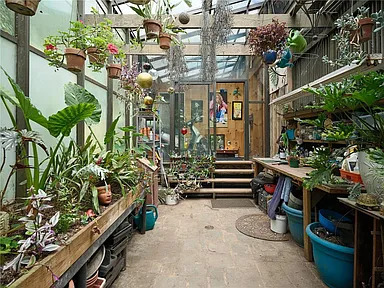
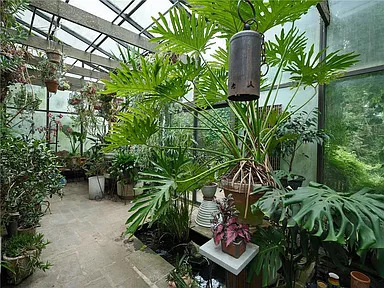
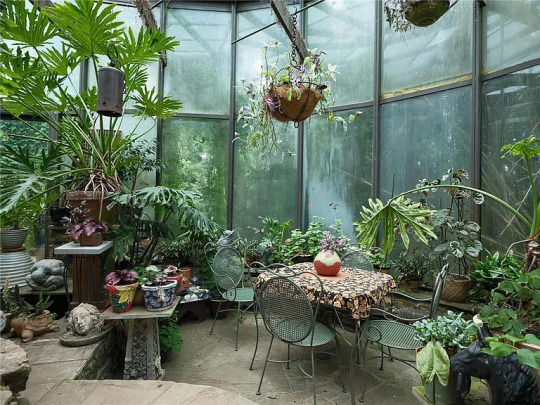
But, this is absolutely glorious. I wonder if they're leaving the plants. Can you imagine stocking this place from scratch?
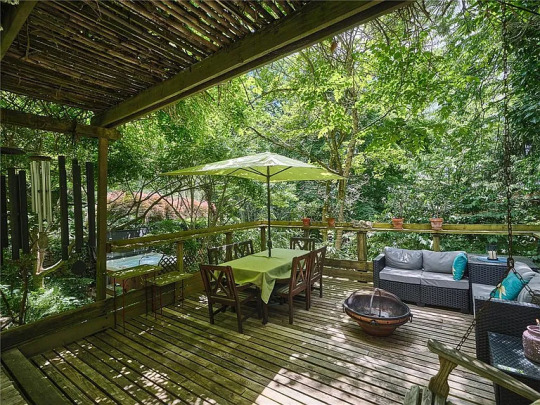
There's a beautiful deck out here, surrounded by lots of trees and greenery.
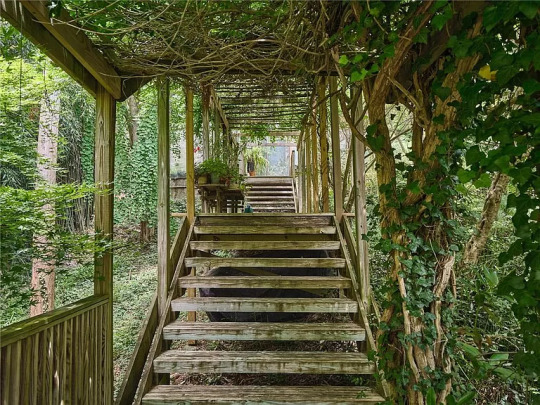

Gorgeous grounds.
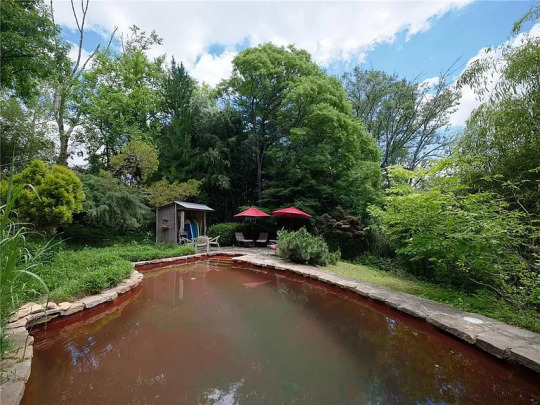
Another murky koi pond. Don't they filter these things?
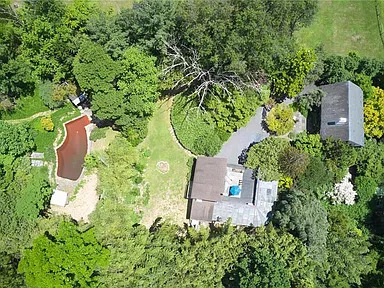
The land measures 1 acre.



https://www.zillow.com/homedetails/180-Sunnyside-Rd-Easton-PA-18042/10164576_zpid/?
207 notes
·
View notes
Text
[at a justice league meeting]
Dick: What, is that some kind of rule?
Wally: Of course it is, Dick. In network TV, if someone shows up at your door, you have to take care of them. It's the pilot of most shows.
Dick: Oh, really? Name 50.
Wally: New Girl, Two and a Half Men, Punky Brewster, Perfect Strangers, Frasier, Will & Grace, Friends, Joey, Home Economics, Mom, Dads, Cheers, Hope & Faith, Raising Hope, Full House, Fuller House, King of Queens-
Superman: That's good. I-I think we get it.
Wally: Oh, no, no. No, this is a name all 50 kind of relationship ... Too Close for Comfort, Mork & Mindy, The Nanny, Mr. Belvedere, The United States of Al, Yes Dear, Down and Out in Beverly Hills: The TV Series, Roader, Golden Girls, ALF, Meego, Empty Nest, Wings, My Two Dads, Evening Shade, I Dream of Jeannie, Off Center, Webster, The Bernie Mac Show, The Return of Jezebel James, Aliens in America, Last Man on Earth, Union Square, Bram & Alice, The Grinder, $#*! My Dad Says, The Fresh Prince of Bel-Air, Damon, Happy Endings, Big Brother Jake, Three's Company, Mama's Family and Who's the Boss?.
Dick: Oh, yeah? Name 50 more!
Wally: [sigh] ... Sliver Spoons, The Odd Couple, The New Odd Couple, Charles in Charge, Benson, Sister, Sister, Suddenly Susan, Checking In, Three's a Crowd, The Cleveland Show, Jessie, Kelly's Kids, Drake & Josh, My Name is Earl, Harry and the Hendersons, ...
[ later ]
Wally: ... I'm in the Band, Pretty Smart, Roommates, How I Met Your Father, In the House, Lopez vs. Lopez, Horsin' Around, Billy, The Tick, Crash & Bernstein, Life With Derek, Sunnyside, Weird Loners, Extended Family, Marvin Marvin, The Facts of Life, Diff'rent Strokes, and-
Superman: Oh my God! He hung himself!
Wally: Nah, naw. That's from Airplane! We do that kind of stuff too. You can stay.
#inncorrect quotes#dc#source: family guy#birdflash#superman#justice league#batfam#dick grayson#wally west#nightwing#flash#robin#kid flash
111 notes
·
View notes
Text

At least what I think😅
Omg pretty king!!🗣️🗣️💯💯✨😒👑✨🔥🔥



0 notes
Text
Sunnyside Retreat - build cc only (Sims 2 Download)
Welcome to Sunnyside Retreat! This home has just the right amount of charm, character and space to fit all of your family's needs. Featuring an open downstairs floor plan, a spacious backyard, and plenty of nooks and crannies to make the home your own!
GENERAL INFO
Lot Type: Residential
Lot Price: 134,000 simoleons
Custom Content: Walls by Honeywell (included)
Expansions Required: ALL Lot Size: 20x30 (2x3)
# of Floors: 2
# of Bedrooms: 4
# of Bathrooms: 2
Enjoy & Happy Simming! Any questions... just ask. 🙂
Lot has been play tested with no issues found.
Download here and enjoy <3

























48 notes
·
View notes